Cross of Burgundy: origin and history of the oldest of the flags of Spain
The Apostle Saint Andrew gives his name to a famous cross-shaped. A cross that was the longest of the flags of Spain.
The symbol has its origin in the middle or end of the first century of our Era, when Saint Andrew died crucified in Patras, Greece, being tied to a cross in the shape of an X. In the Middle Ages it was taken as a symbol by the Dukes of Burgundy, an independent state that occupied part of what is now northern France, Belgium and southern Netherlands. Specifically, the Dukes of Burgundy used two logs crossed and represented naturally, with knots, as their flag. In 1477 the then Archduke Maximilian of Austria (future Holy Roman Emperor) married Duchess Marie of Burgundy, with their first-born son, Philip, inheriting the title of Duke of Burgundy on his mother's death in 1482. In 1496, Philip married Juana, daughter of Queen Elizabeth I of Castile. When Juana came to the throne on the death of her mother, Felipe became King consort. It was he who introduced the Cross of Burgundy in Spain, an emblem worn by his personal escort, the so-called Burgundian Guard.
In 1516, after the death of Ferdinand Th Catholic and Queen Juana's imprisonment, her son and Philip's son ascended the throne, with the name of Charles I (from 1520 he would become Holy Roman Emperor with the name of Charles V). During his reign, the Cross of Burgundy was extended as the common emblem to the flags of the companies of the Tercios, being represented together with the personal emblems of each captain and each Tercio carrying a yellow flag with the imperial coat of arms representing the monarch. The first time that the cross of Saint Andrew appeared as an emblem of Spain was in the Battle of Pavia in 1525, fought in that Italian town and which ended in a resounding French defeat, ending King Francis I of France captive of the Spanish. In this painting by Augusto Ferrer-Dalmau, the Galician Alonso Pita da Veiga is represented on horseback, one of the three Spaniards who captured the French King, accompanied by a flag with a red cross with smooth edges, without the knots.
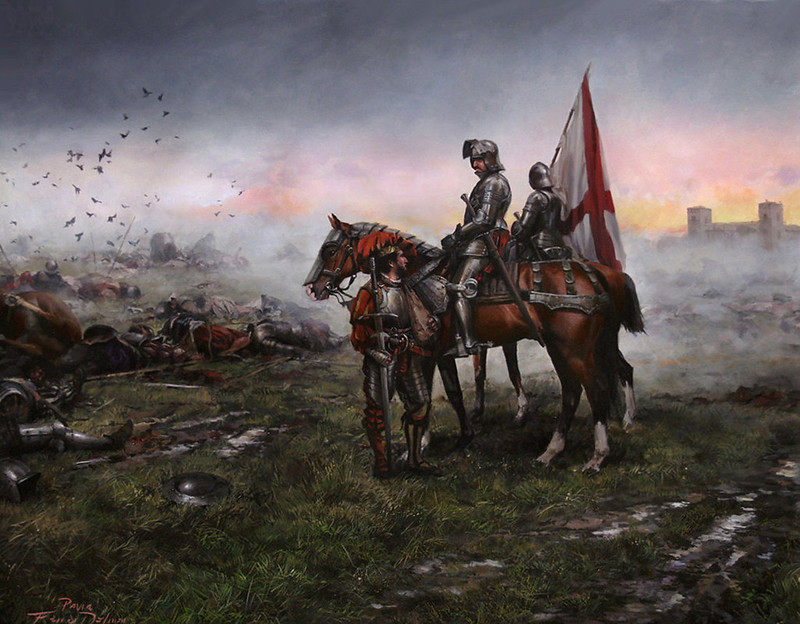
However, the most widespread design of the Cross of Burgundy was in the form of an ecoted cross, with projections on the arms of the cross representing the knots of the trunks. A design without reliefs, typical of heraldic patterns. The color red was due to the blood of the martyrdom of Saint Andrew, but it was also the most distinctive color of Spanish heraldry, clearly appearing on the coats of arms of Castile and Aragon. In addition, red was the color that distinguished Spanish soldiers for centuries, wearing it on bracelets or bands in the case of officers and generals. However, in the following centuries various flag designs were used in different companies, sometimes with the Cross of Burgundy in blue, white, yellow... In this photo we see a sample of this variety in the historical reenactment of Slag om Grolle which is held annually in Groenlo (Netherlands).
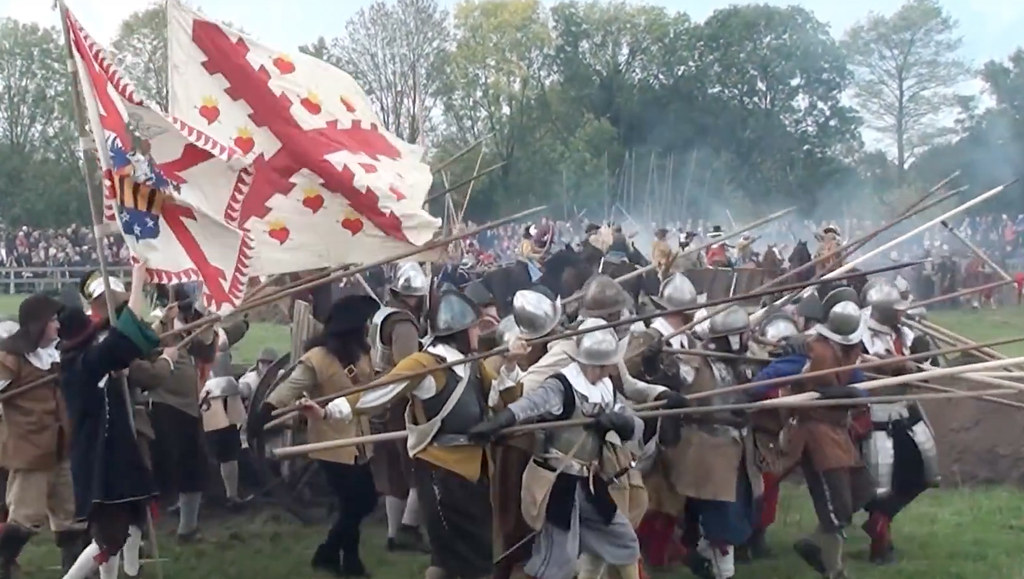
With the accession to the throne in 1556, and as he no longer had the title of emperor, King Philip II arranged for each third to carry a flag with a yellow background and with the Cross of Burgundy in red, representing the monarch (in the same background the imperial coat of arms had been captured during the reign of Charles I):
The captain flags continued to display the red cross on various backgrounds, increasingly complex over time. These flags have not been preserved, but we are aware of their design thanks to various paintings, such as the one in the "Victoria de Fleurus" (1634) by Vicente Carducho, in which you can see flags with the Cross of Burgundy and the background in different colors. But without a doubt, the most famous of all is the "The Surrender of Breda" (1634-1635) by Velázquez, in which two flags can be distinguished, both with the cross without knots. A red cross on a blue and white checkered pattern in the most visible one, and a blue cross on a red background in the one behind it (click on the image to enlarge it):
A white flag used to wave on Spanish ships with the royal coat of arms or the Cross of Burgundy on a white background, as we can see in this painting of a naval combat between the Spanish and the Dutch painted in 1640 by Jacob Gerritsz Loef (click on the image to enlarge it):
The same flag that also flew in the fortifications, so this flag was the first properly identified as the Spanish flag throughout the world. It should be noted that in some paintings of the time they also appear naval flags in which the Cross of Burgundy appears on a blue background.
The Cross of Burgundy also appeared on what was the first flag of the Spanish merchant marine, although in this case the cross was painted white on a blue background. The exact date of its introduction is unknown, but it is known that the use of this flag was prohibited in 1762.
During the War of Succession (1701-1713), both Bourbons and Austrians used the Cross of Burgundy on their flags. After his accession to the throne, King Philip V of Bourbon established a new organization in the Army French style. Tercios disappear, which are replaced in regiments, in turn divided into battalions. The Cross of Burgundy is maintained as a distinctive element, but the colonel flag would have a white background with the royal coat of arms, as we see in this image published by the web The King's Armies:
Durante la Guerra de Sucesión (1701-1713), tanto borbónicos como austracistas usaron el Aspa de Borgoña en sus banderas. Tras su llegada al trono, el Rey Felipe V de Borbón establece una nueva organización en el Ejército al estilo francés. Desaparecen los tercios, que son sustituidos en regimientos, a su vez divididos en batallones. La Cruz de Borgoña se mantiene como un elemento distintivo, pero la bandera coronela sería de fondo blanco con el escudo real, como vemos en esta imagen publicada por la web Los Ejércitos del Rey:
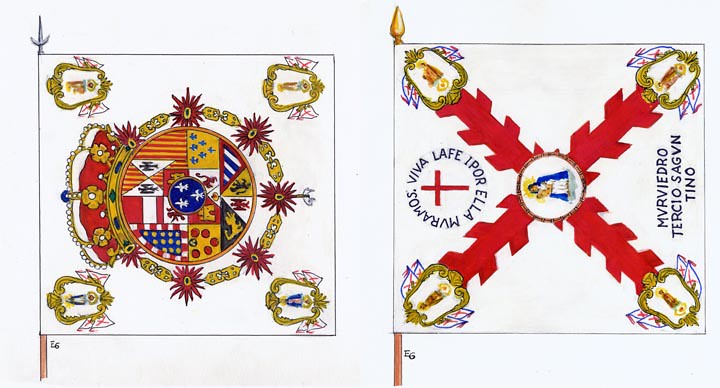
The exception in this case were the artillery regiments, whose battalion flags bore the Burgundy Cross in red but on a blue background instead of white, a provision that was maintained between 1710 and 1861:

The same color was used on their battalion flags by the Walloon Guards, who gave personal protection to the King. With Ferdinand VI (1746-1759) the colonel flags recovered the Cross of Burgundy, but they lost it again with the Royal Ordinances of 1768, already reigning Charles III.
The tendency to use flags on a white background with the royal coat of arms, without the Cross of Burgundy, especially on ships, caused a problem, since at a certain distance it was difficult to distinguish Spanish ships from French ones, whose monarch -also Bourbon- also used a white flag with his coat of arms. There was also the problem that the Spanish merchant marine was without a regulatory flag since the use of the blue flag with the white cross was prohibited in 1762. Thus, after calling a competition for this purpose, in 1785 Charles III signed a Royal Decree establishing a new design for the Spanish naval flag: the red and yellow that is still used today. For the merchant navy, it provided a similar design, with a large yellow stripe, two red stripes and two other yellow stripes in the extremes. However, the Cross of Burgundy -on a white background and on other colors- continued to be used in Army units and in Spanish fortifications. Although during the War of Independence (1808-1814) the rojigualda became very popular, many Spanish military units continued to use the Cross of Burgundy, which continued to be used also during the First Carlist War (1833-1840), especially on the side Elizabethan. In 1843, Queen Elizabeth II ordered the introduction of the red and yellow flag to the Army, changing all the existing flags. The military flags would continue to display a small Cross of Burgundy behind the royal shields until 1873, with the arrival of the First Republic.
Thus, the flag of the Cross of Burgundy had represented Spain from 1525 to 1843, 318 years, more than the current red and yellow flag has been in force (232 years if we count from its creation as exclusively naval flag in 1785). With the reign of Alfonso XIII, the Cross of Burgundy would reappear as one more element in the flags of the military units, located behind the royal coat of arms on the red and yellow stripes. One of the units that most contributed to its recovery was the Spanish Legion, founded in 1920 and which recovered the Tercio as a unit instead of the regiment, inspired by the old Spanish Tercios. Along the same lines, the legionary flags adopted the Cross of Burgundy in various colors, in a similar way to what had been done with the captain's flags during the Austrian dynasty:
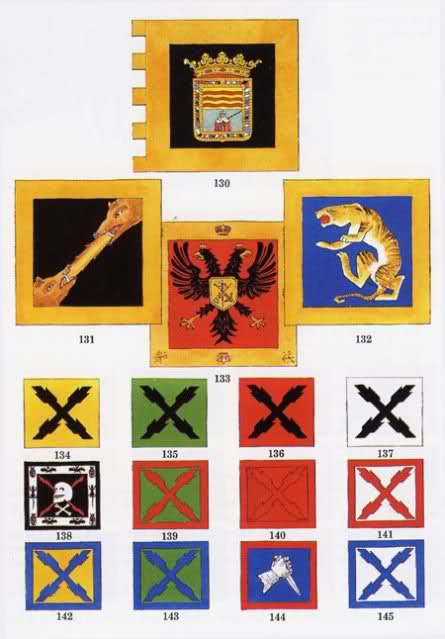
In 1922 the Cross of Burgundy was also adopted by a Basque nationalist entity, the Euzko Mendigoizale Batza (Association of Basque Mountaineers), using the cross on a green background on a white background with a red border (Source: Untzamendi.biz):

This same flag was used by the Euzko Gudarostea, the Army Corps formed by the Basque Government of the PNV (Basque Nationalist Party) during the Spanish Civil War. On May 3, 1934, the Traditionalist Communion also endorsed the Cross of Burgundy, also becoming the emblem of its militia, the Requeté, in 1935. The Carlists were, without a doubt, the ones who most popularized this symbol during the war, by carrying it with the Tercios in which their combatants participated.
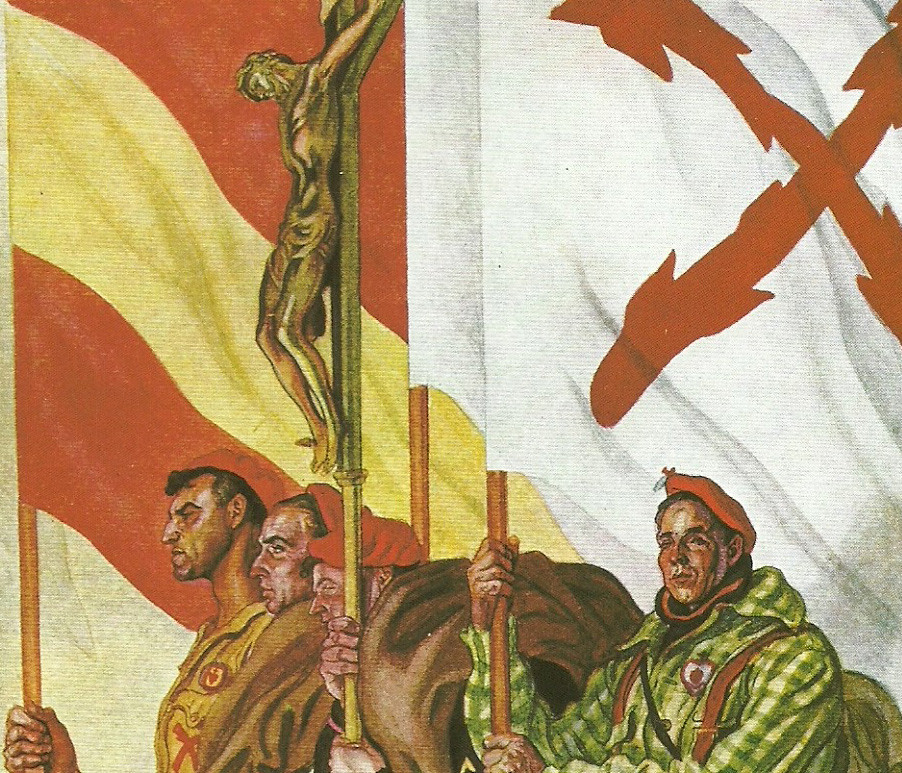
Navarrese Carlist requetés of the Tercio de Lacar during the Spanish Civil War. Fragment of a painting by Carlos Sáenz de Tejada
During the Franco regime, the red and yellow flag was maintained as the most common in military units, limiting the use of the Cross of Burgundy to the Legion. With the reign of Juan Carlos I, the Cross of Burgundy reappeared in the royal standard and was gradually introduced again in military units, with different colors for both the cross and the background. Here we see an example of several flags of units belonging to the Brigade "Galicia" VII (BRILAT):
Today they are used on their flags by both the Spanish Army and the Marine Corps, the Royal Guard, the Military Emergency Unit and the Civil Guard. Of course, they are not only used with the cross in red, as we see in this BRILAT coat of arms on a flag used by that Brigade in its deployment in Afghanistan:
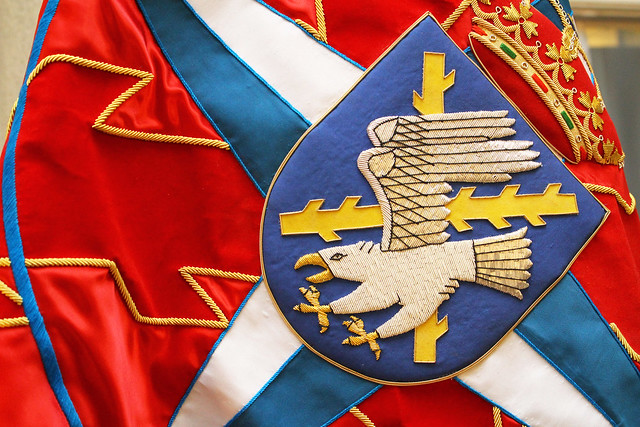
Under these lines we see a rehearsal of a military act of the Marine Corps with two white flags with the Cross of Burgundy in red and anchors at the ends (Photo: Abc del Mar Menor):

The Spanish Air Force also uses a cross of Saint Andrew on its aircraft as a symbol of a deep-rooted Spanish military tradition, although in this case it is an uncut black cross on a white background (the exception being Spanish Air Force are the search and rescue aircraft, which use the red and gold flag as a tail badge). This same black cross appears on the tail of the aircraft of the Army, the Civil Guard and the Military Emergency Unit.

The Cross of Burgundy also appears on the flags of some towns, such as that of Creixell (Tarragona), in this case on a purple background, which may be due to the fact that it comes from a colonel flag.
The Cross of Burgundy also appears on the municipal coat of arms of San Andrés Salou (Gerona), in this case with the silver cross on a blue field, said in heraldic terms:
More characteristic and showy is the one in Huesca, square and with a typical design from the third of the 17th century:
The city of Logroño also has a red cross on a white background on its flag, although in this case it is not an offset cross:
Outside of Spain, and as I told you here ten years ago years, the department of Chuquisaca, in Bolivia, also has a flag with the Cross of Burgundy, almost indistinguishable from the one used by the Spanish Empire:
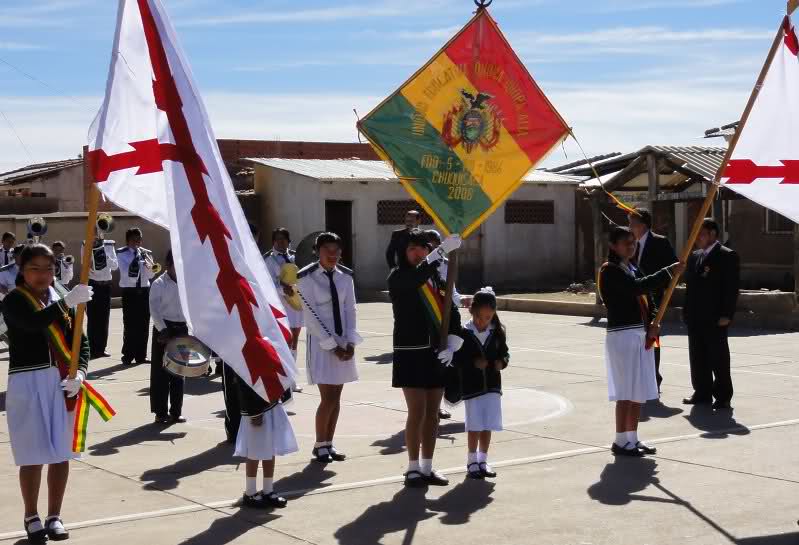
In addition, in the United States two states still retain the red cross, Alabama (left) and Florida (right), whose territory was once under Spanish rule. As you can see, in this case it is non-ecoted blades:
The flag of the Cross of Burgundy also continues to fly in various historical events in different places that proudly remember its Spanish past, such as St. Augustine (Florida, United States):
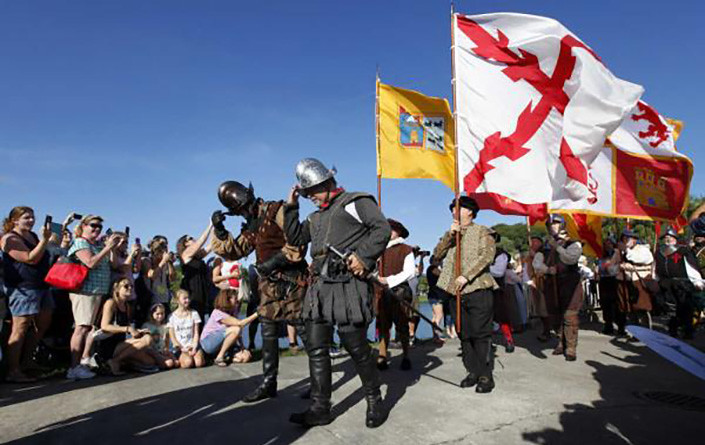
And also Fort Mosé, in the same state, where every year they remember the slaves who found refuge in Spanish territory, joining the Spanish Army:
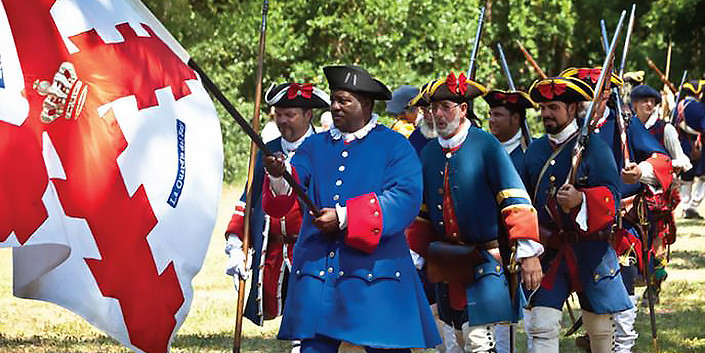
It has even flown in Mullaghmore, in the northwest of Ireland, where they annually remember the Spanish shipwrecks of the Great Armada who were rescued by the Irish inhabitants of those coasts:

In 2017 the Burgundy Cross also appeared in Lima (Peru) on the occasion of citizen mobilizations in defense of the family, a gesture symbolic of adherence to the Hispanic culture in a country that was part of the Spanish Empire:

Note: Heading these lines we see a fragment of the painting "Asturias Regiment, Spanish blood", by Augusto Ferrer-Dalmau.
|
Don't miss the news and content that interest you. Receive the free daily newsletter in your email: Click here to subscribe |
- Most read
- The Pegasus case and how it could end with Pedro Sánchez due to a decision by France
- A large collection of Volkswagen cars hidden in an abandoned mine in Switzerland
- The real reason for Sánchez's victimizing letter using his wife as an excuse
- US F-35A fighters flying with Polish F-16s over Poland at a time of great tension
- The ten oldest national flags in the world that are still in use today
- The Harrier IIs of the Spanish Navy fly with F-16 and F-4E of the Hellenic Air Force
- A few words from Tolkien and a call to resistance at a critical moment for Spain
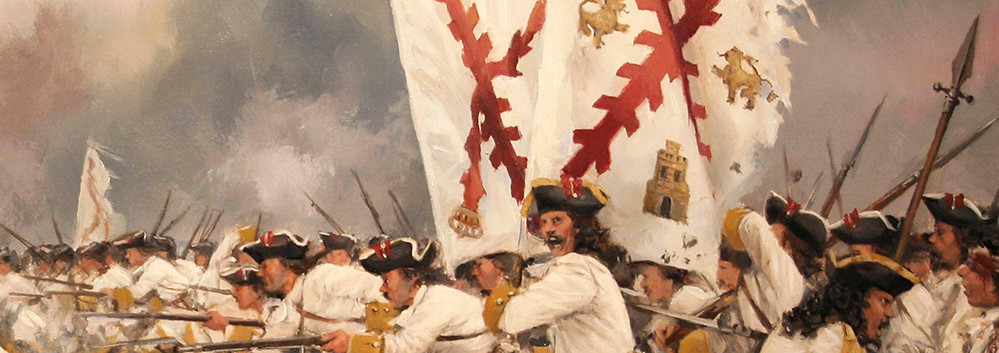
 ES
ES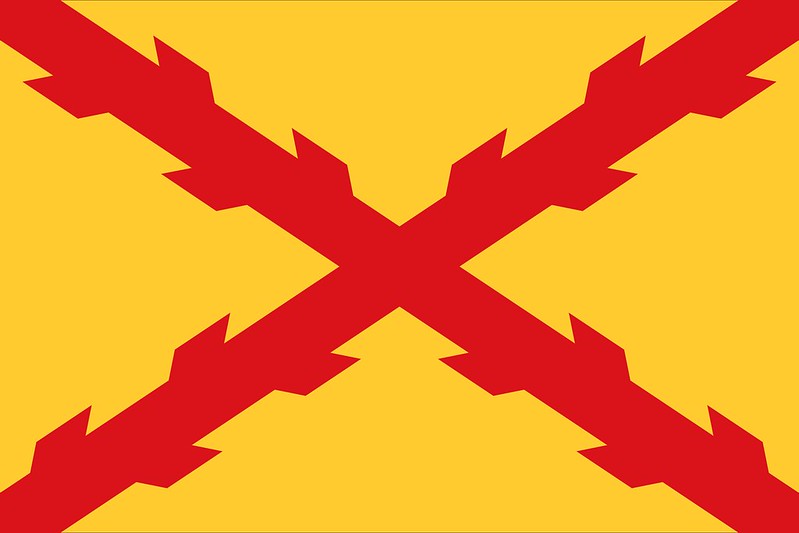
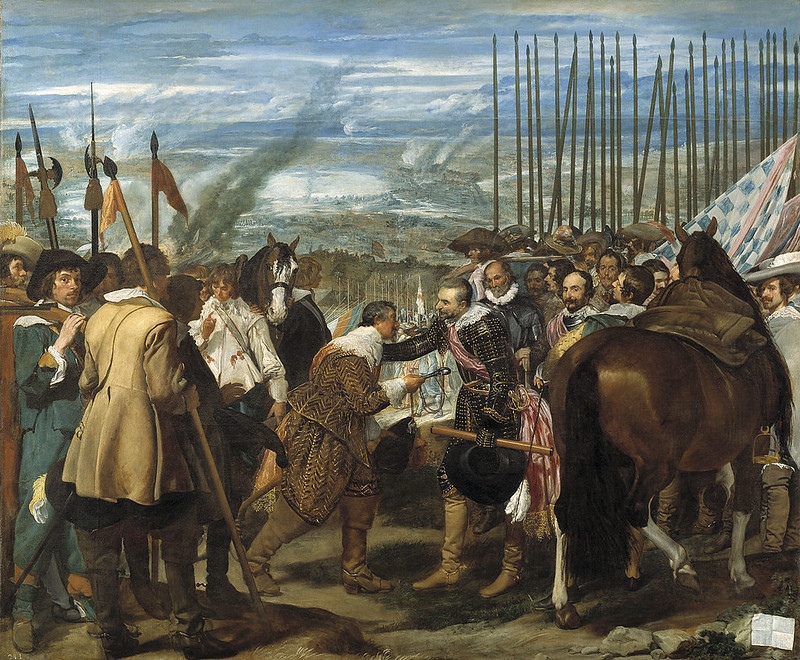
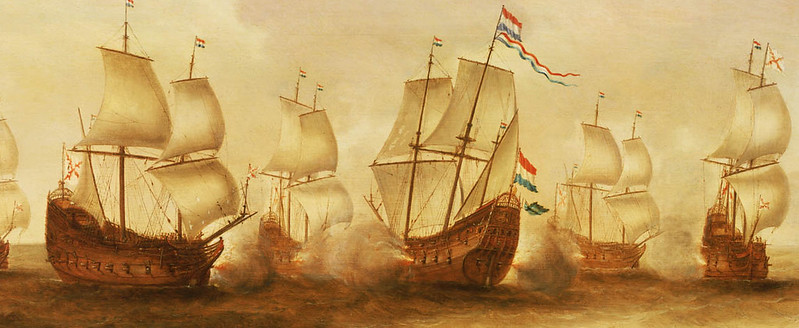

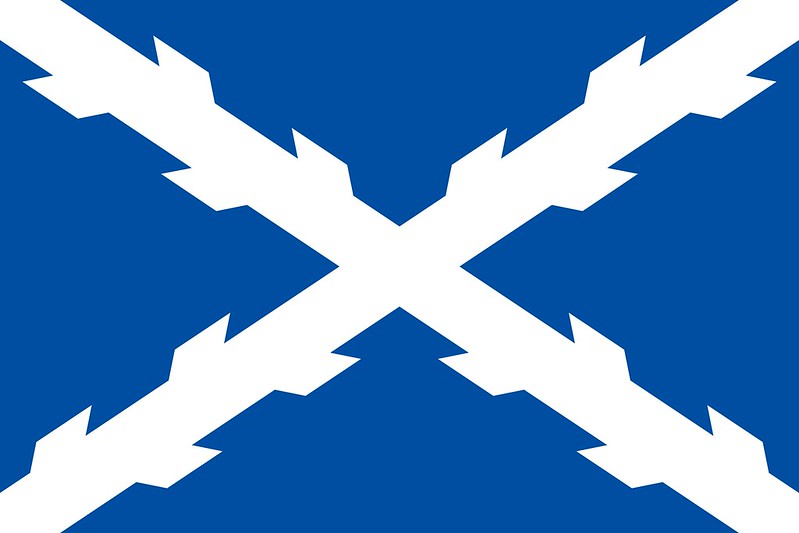
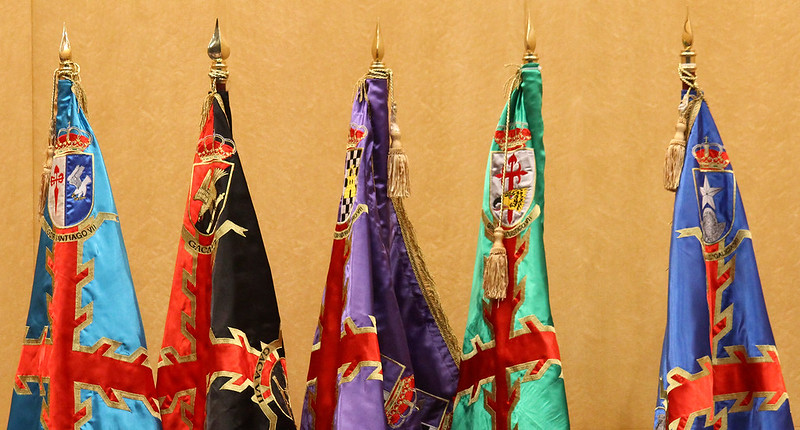

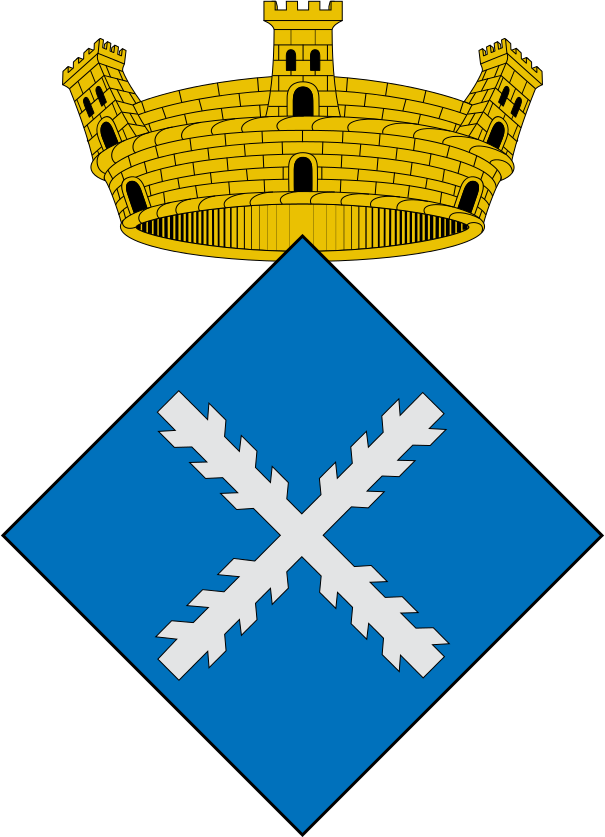


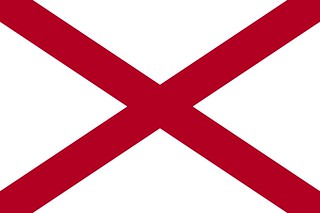
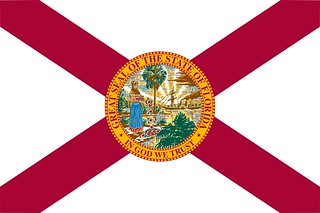






Opina sobre esta entrada: